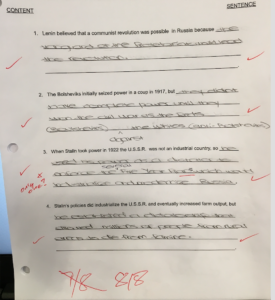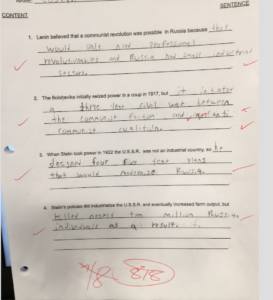My departmental colleagues and I spent the past week scrambling to put together online learning activities for our students. We decided to approach the task by grade-level course. For our 9th-grade team, that was light lifting. We’ve been planning together the whole year. For 10th-grade Modern World History and 11th-grade US History, we decided that, for the next two weeks, while the world is turned upside down, we’d design activities that approach the crisis, but from a distance.
For many of us, our initial impulse was to stop everything and focus on COVID-19 and its consequences. Those consequences certainly merit attention. The implications of this viral pandemic for public health are enormous. Many people will become sick, and many will die. The consequences of our global response to the pandemic are in many ways even more alarming. Our governments are shutting down the global economy. That’s not unreasonable. On the contrary, the alternative is unsustainable: deaths in the millions. On the other hand, inducing a global depression will also have mortal consequences for many, many people. There is very little good news here.
Our students should know what’s happening. But after we Zoomed for a bit, each team came to the conclusion that full-on study of *this* crisis was likely to overwhelm and alarm too many of them. Our students need basic facts about timely public health measures and the reasons for adhering to them. Beyond that, they need safety at home, connection with us, and as much as possible, a way to stay in academic rhythm and routines. Most of all, they need perspective.
So we decided that we would approach our current crisis from a distance. We would learn about crises in general and how the global community and the American government have attempted to cope with them. A clever member of our 11th-grade team suggested that we do a comparative study of Presidents. After some deliberation, we agreed to these case studies:
- Lincoln and the Civil War (2nd Inaugural)
- FDR and Pearl Harbor
- JFK and the Cuban Missile Crisis
- Carter and the Energy Crisis
- Bush, Jr. and 9/11
- Obama and the Great Recession
For each crisis, we paired simple background readings (Story First!) and a famous Presidential speech that addressed the crisis. We prepared a Question Two template to guide students’ interpretation of the speech, which they will both read and either hear or watch. When they’ve completed the case studies, we’ll ask them to make some inferences (Q3) and judgments (Q4) about how Presidents do and should speak to the country about a national crisis.
In Modern World History, our approach was to ask, How does the global community address a crisis? We’re starting this week with the United Nations. We’ve always wanted to teach more about the UN and global institutions generally than we typically have time for. Now we’re making time, and for good reason. After this week, we’ll study a UN response to a previous crisis and then do our best to run a remote Model UN on another one.
It is our responsibility to teach our students what’s going on in their world and how to think about it. We’re training philosopher-citizens, after all. Studying current events is important, especially when you’re living them day to day. On the other hand, we often overlook how much background knowledge it takes to make sense of unfiltered news. My brilliant Econ teacher identified something new and notable about our current predicament: for the first time, the global economy is experiencing a supply shock and a demand shock at the same time. Other literate friends and colleagues have made apt comparisons to the kinds of crises we’re introducing our students to with our new remote learning units. That’s what we want for our students: not to drink from the firehose of daily occurrence, but to figure out how to get their bearings in a world turned upside down.
And, for what it’s worth, they need some basis for rational hope. The COVID-19 crisis of 2020 will get worse before it gets better, at least in the US. People who don’t know anything about the past have only their fear and anxiety to guide them. People who don’t know that humans have faced crises before and somehow managed to muddle through them have to console themselves with fantasies, some of which might get them (and us) into trouble. We’re wagering that broadening the lens and approaching our current crisis from a distance will save our students from all that.
G.S.

